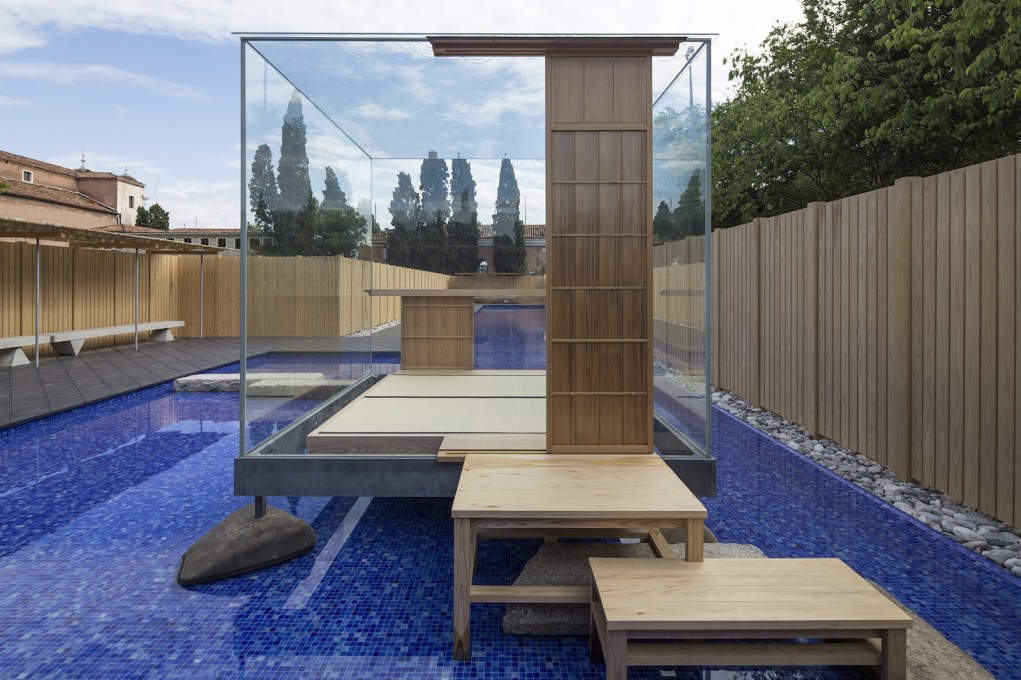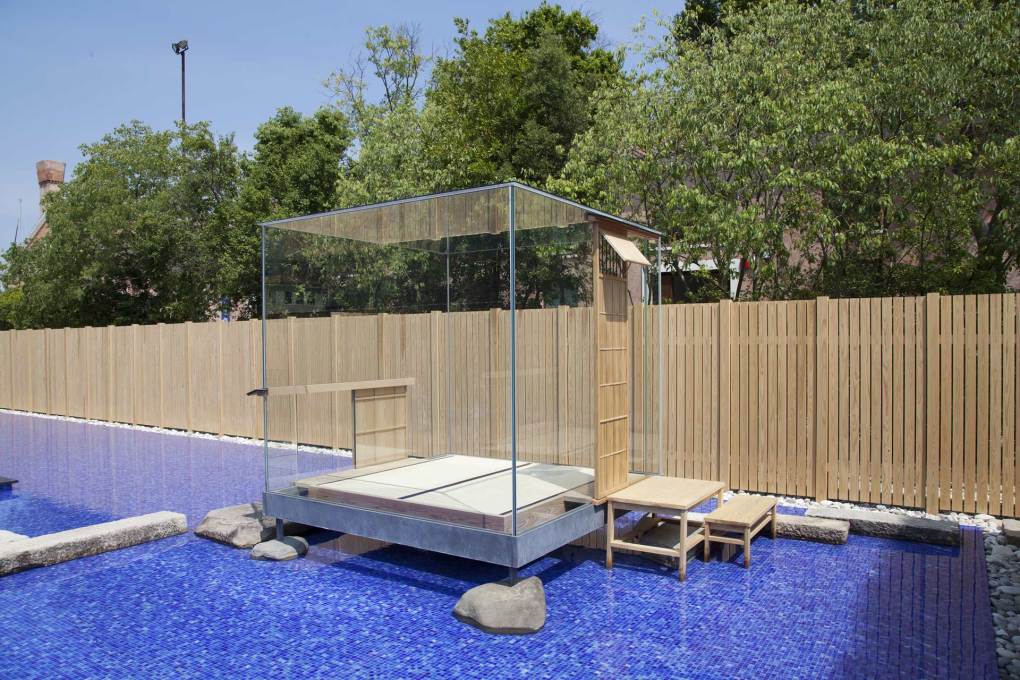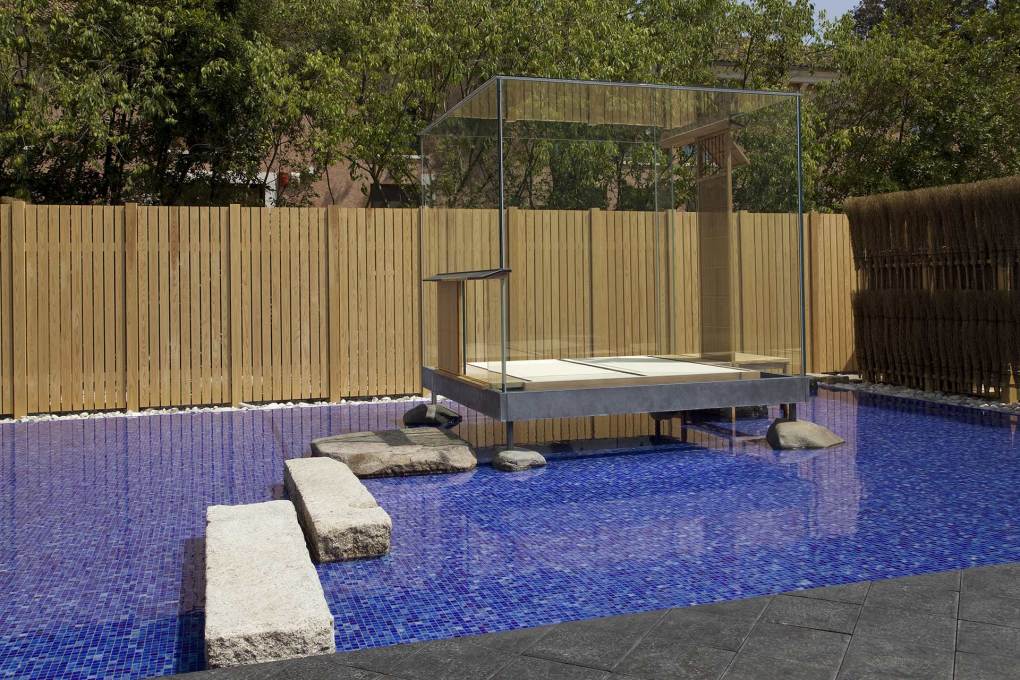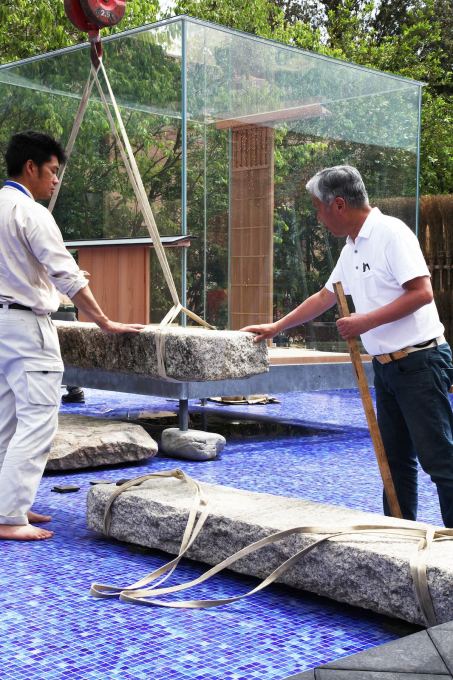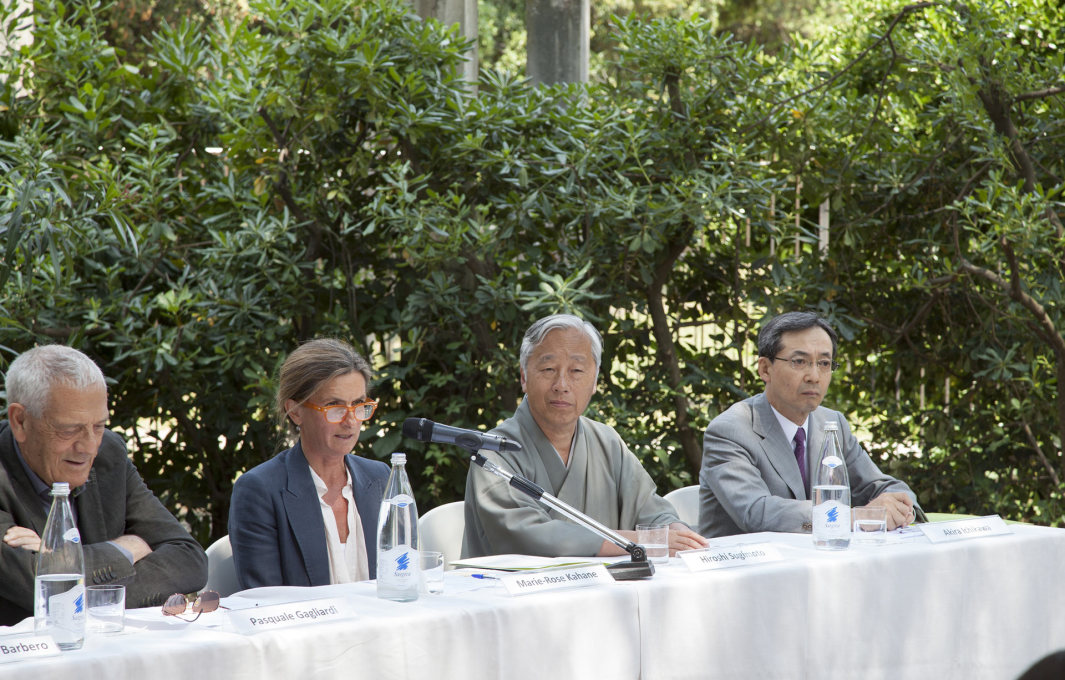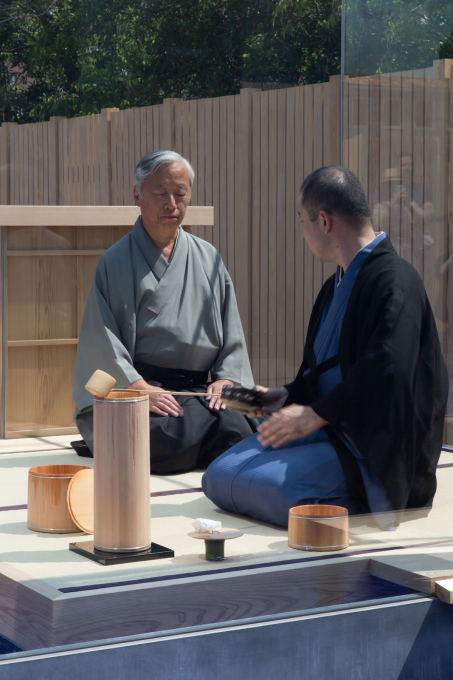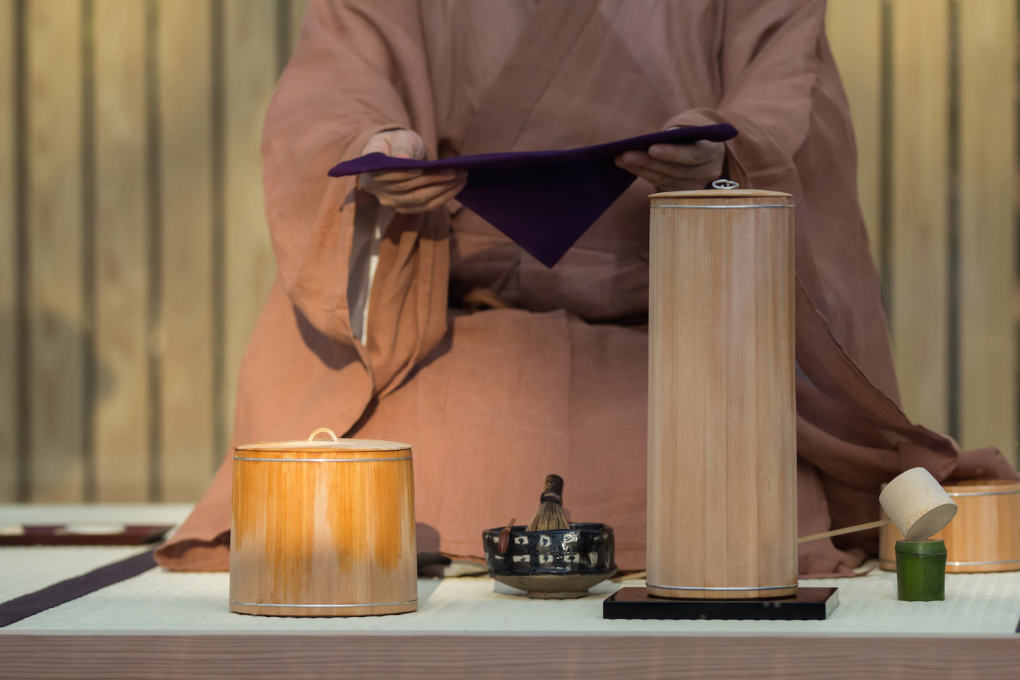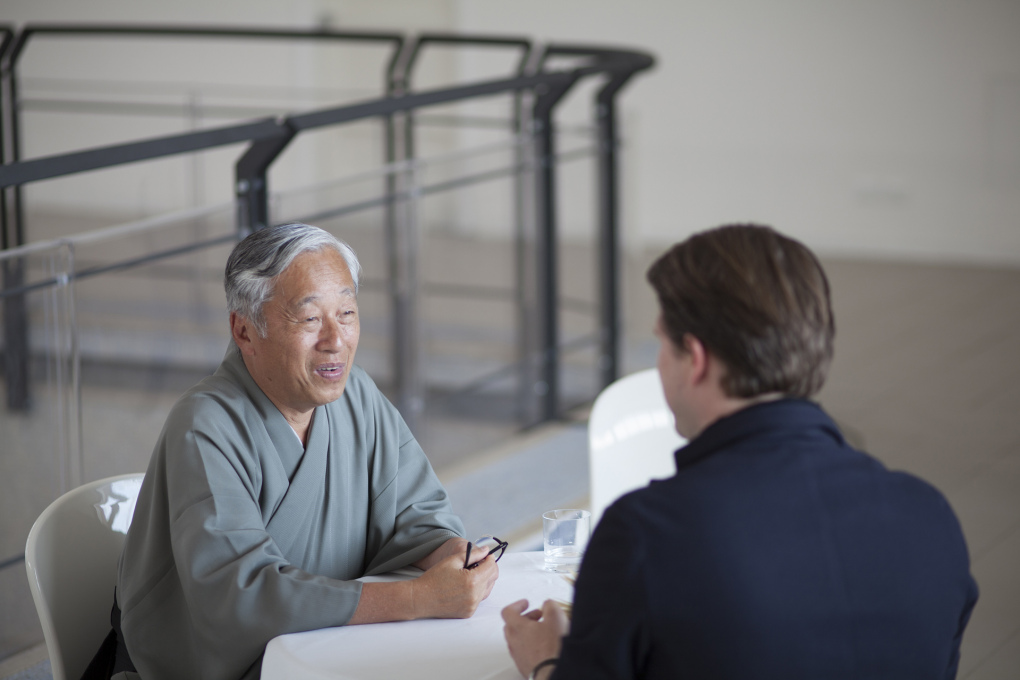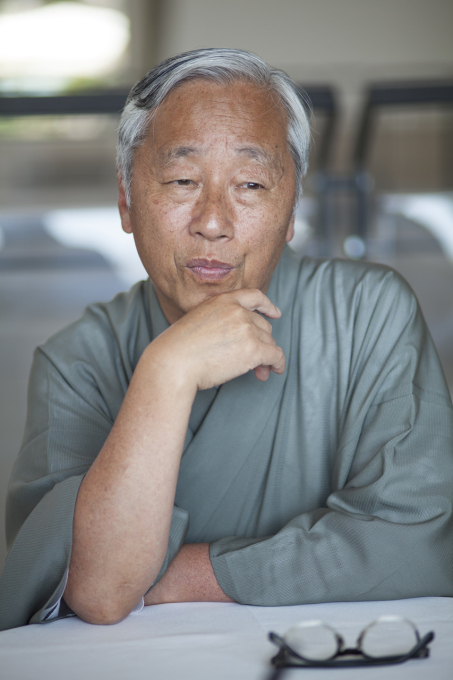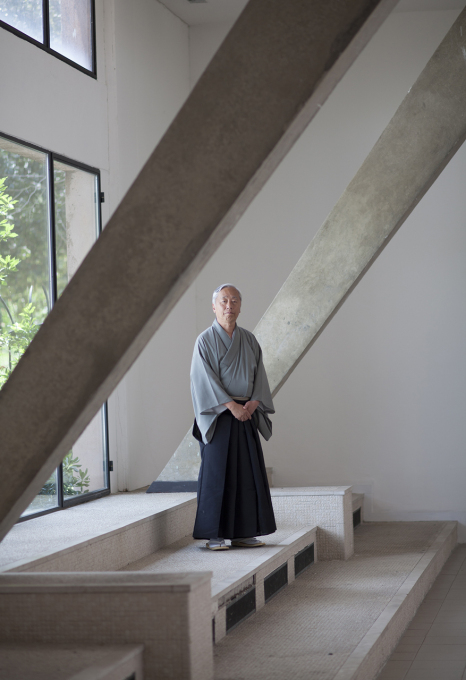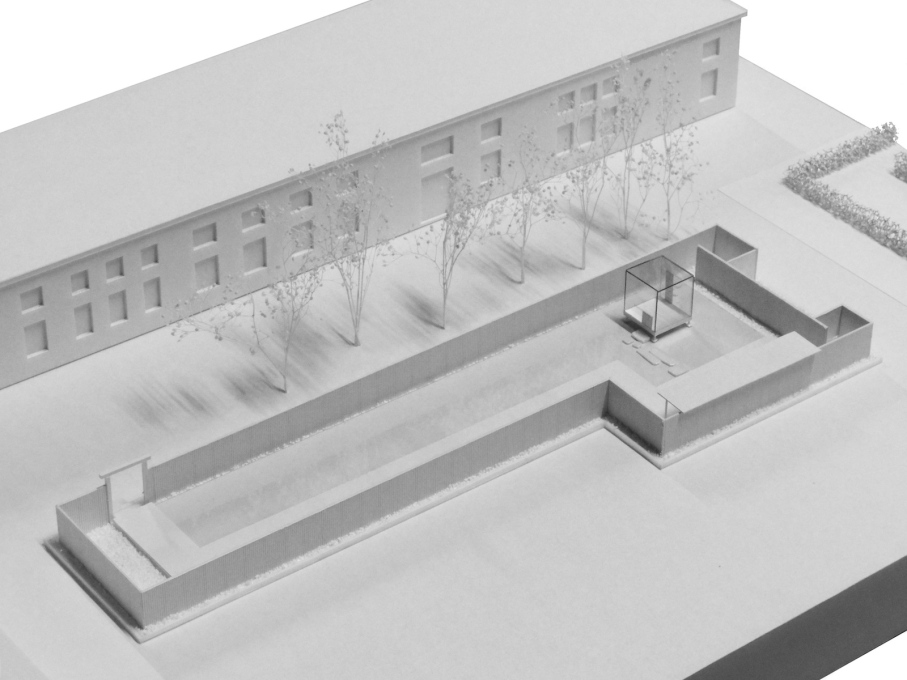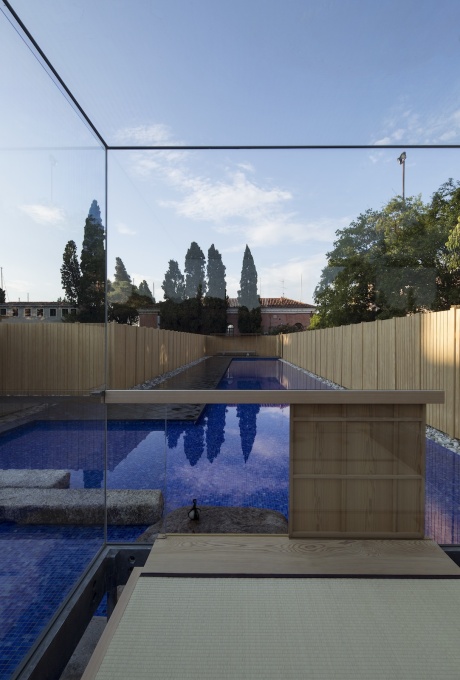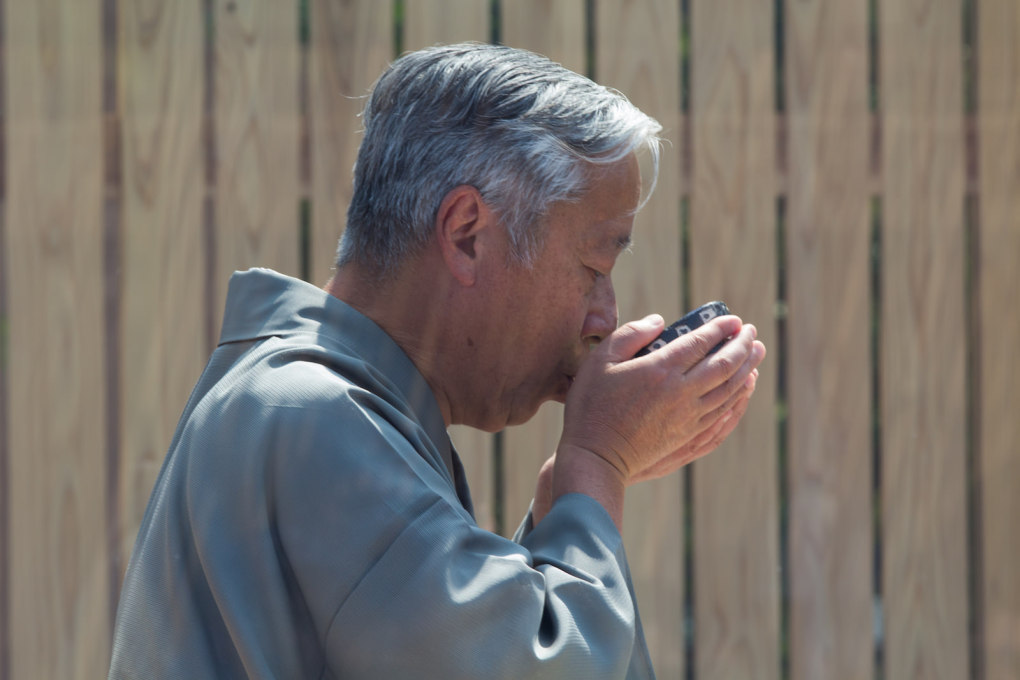One of the most prominent “off-site” pavilions at this year’s Venice Architecture Biennale was designed not by an architect, but a photographer: Hiroshi Sugimoto. Norman Kietzmann visited the tea house he designed and talked to him about art and architecture and his taste in tea.
If London can do it, then so can Venice. This was the message conveyed by an event held on the island of San Giorgio Maggiore, hosted by Fondazione Cini and the Pentagram Stiftung, on the Architecture Biennale’s opening day. “We wanted to bring to Venice the concept of a temporary pavilion, similar to that which the Serpentine Gallery has for years used to transform Hyde Park,” explained Marie-Rose Kahane, chairwoman of the Pentagram Stiftung.
And the builder of this inaugural pavilion? Not an architect, but prominent photographer Hiroshi Sugimoto, who for the commission has designed a glass tea house and its surrounding setting, tucked behind Palladio’s cloister. This was not the first excursion into construction for the 66-year old, currently based in Tokyo and New York. Triggered by his frustration with contemporary museum architecture, over the last six years he has been carrying out architectural projects with the help of three assistants.
“I have no intention of measuring myself against architects. I am an artist. The big difference between art and architecture is their function. Architecture must function; art not. Yet many architects today seek artistic forms for their buildings, which consequently lose their function. Having already had so many exhibitions in major museums, there are many things that upset me as a visitor,” explains Sugimoto, who came to the press conference dressed in a kimono. Coincidentally, it was Biennale Director Rem Koolhaas’ show at Leeum Museum in Seoul that emboldened Sugimoto in 2008 to found his own architectural office, New Material Research, in Tokyo.
Now open, the Glass Tea House Mondrian is a cube, its sides 2.5 metres long, surrounded by a landscape covering 40 by 21.5 metres. Enclosing this is a cedar wood fence constructed without the use of nails by artisans from the Tohoku region, an area particularly hard hit by the 2011 tsunami. The pavilion itself seems to float above a pool covered in dark blue Bisazza mosaic tiles. According to Sugimoto, the pavilion’s name is supposed to create a bridge between European modernity and Japanese tradition, which even in the 16th century had developed a minimalist aesthetic through the tea ceremony.
For the contents of the pavilion, nothing was left to chance. “Not only did the traditional tea masters design their own teahouses, but also the bowls, vases and even the flower arrangements,” explains Sugimoto. Together with Murano-based glass manufacturer Cenedese, he designed 22 different tea ceremony bowls, some of which were launched as an edition. For the pavilion’s opening, a tea ceremony was conducted by a tea master from Kyoto, whose family has celebrated the ritual for 15 generations. Surprisingly, when asked about what tea he personally enjoys the most, Sugimoto replied: “Actually, it’s coffee I drink every day.”
– Norman Kietzmann, BauNetz
Hiroshi Sugimoto: Glass Tea House Mondrian
Until 29 November 2014
Fondazione Cini and Pentagram Stiftung
Sponsored by Sumitomo Forestry and Fondazione Bisazza.
Isola di San Giorgio Maggiore, Venice




